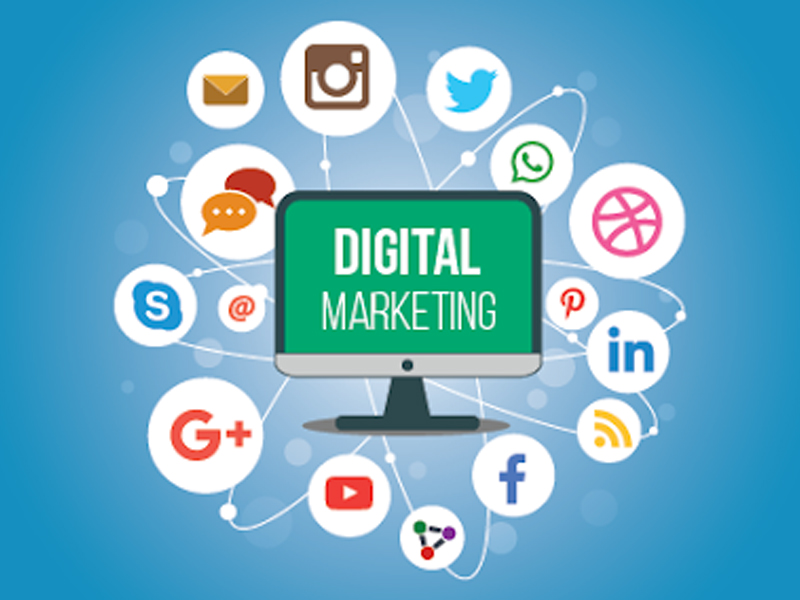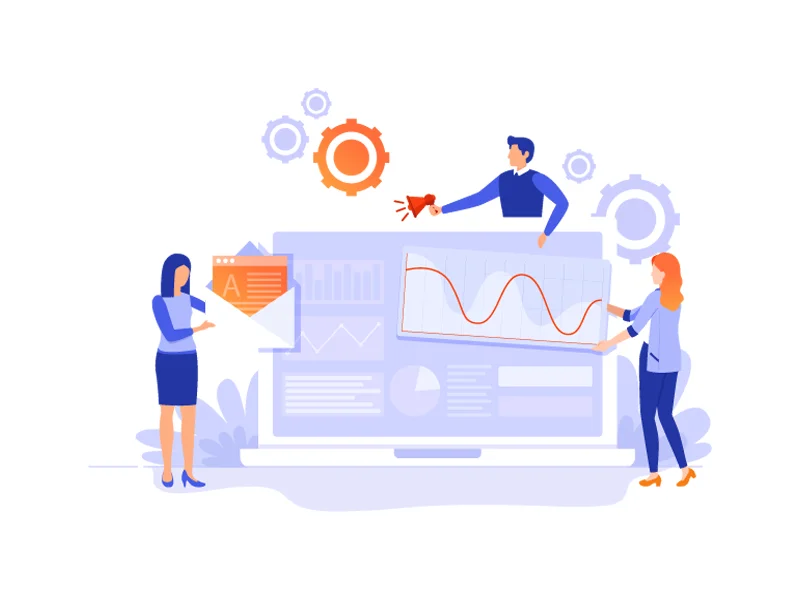

Unlocking the Potential of Email Marketing: A Comprehensive Guide
In today's digital age, where information moves at the speed of light, and consumers are inundated with marketing messages, email marketing stands out as a tried-and-true method for businesses to connect with their target audience, foster engagement, and drive conversions. Far from being obsolete, email marketing continues to be a cornerstone of modern marketing strategies. In this comprehensive guide, we will delve deep into email marketing, covering its definition, various marketing emails, its undeniable importance, a detailed examination of its benefits, execution strategies, critical factors for success, and practical tips for achieving email marketing excellence. Let's embark on a journey to unleash the true potential of email marketing.
What is Email Marketing?
Email marketing is a digital marketing strategy that sends carefully crafted and targeted emails to recipients to promote products and services or engage with the audience. These emails can serve various purposes, including providing information, driving promotions, or facilitating transactions. Email marketing is a direct communication channel between businesses and their subscribers, enabling personalized and relevant interactions.
Types of Marketing Emails
Promotional Emails:
Promotional emails are designed to showcase your products or services and encourage recipients to take action, usually making a purchase.
Examples: Flash sale announcements, product launches, exclusive discounts, and special offers.
Newsletter Emails:
Newsletter emails provide subscribers with regular updates, industry insights, valuable content, and news about your brand or niche. They aim to establish your authority and keep your audience informed and engaged.
Examples: Monthly newsletters, industry roundups, curated content, and educational resources.
Transactional Emails:
Transactional emails are automated messages triggered by specific user actions, such as order confirmations, shipping notifications, or password resets. They are essential for providing a seamless customer experience.
Examples: Order receipts, shipping confirmations, password reset emails.
Welcome Emails:
Sent to new subscribers, welcome emails introduce your brand, set expectations, and encourage further engagement. They play a crucial role in making a positive first impression.
Examples: Welcome messages, introductory offers, and onboarding sequences.
Abandoned Cart Emails:
Abandoned cart emails target users who have added items to their shopping cart but still need to complete the purchase. These emails aim to re-engage potential customers and entice them to finalize their transactions.
Examples: Cart recovery reminders, product recommendations, and limited-time incentives.
Re-engagement Emails:
Re-engagement emails are sent to dormant subscribers with declining interest in your emails. These emails attempt to revive their engagement through personalized content, exclusive offers, or simply asking if they wish to continue receiving emails.
Examples: "We miss you" emails, special incentives, and personalized reactivation campaigns.
Why Email Marketing Is Important?
Cost-Effective: Email marketing offers an exceptional return on investment (ROI) compared to other marketing channels. According to the Data & Marketing Association (DMA), email marketing can generate an average ROI of $42 for every $1 spent.
Targeted Communication: Segmentation and personalization enable precise targeting, ensuring your messages resonate with specific audience segments.
Conversion Driver: Email campaigns can directly impact sales, sign-ups, downloads, and other desired actions, making them a powerful tool for driving conversions.
Data-Driven Insights: Email marketing platforms provide extensive data and analytics, allowing you to track metrics like open rates, click-through rates, conversion rates, and more. This data empowers you to refine your strategy based on actual performance insights.
Global Reach: Email marketing provides a global reach, allowing you to connect with an audience worldwide at any time, making it ideal for businesses with international aspirations.
The Benefits of Email Marketing
Increased Brand Loyalty:
Consistent communication through email helps establish trust and build long-lasting relationships with your subscribers. When subscribers find value in your emails, they become more loyal to your brand.
Benefits: Improved customer retention, higher customer lifetime value, and increased word-of-mouth referrals.
Personalization:
Personalization involves tailoring your email content to the preferences and behaviors of individual subscribers. It makes your emails more relevant and engaging.
Benefits: Higher open and click-through rates, increased conversion rates, and improved customer satisfaction.
Automated Marketing:
Automation allows you to create email workflows that trigger emails based on user actions or time intervals. This streamlines your marketing efforts and ensures timely communication.
Benefits: Time savings, consistent communication, and improved lead nurturing.
Measurable Results:
Email marketing platforms provide detailed metrics to measure the performance of your campaigns. You can track open rates, click-through rates, conversion rates, unsubscribe rates, and more.
Benefits: Informed decision-making, campaign optimization, and better ROI tracking.
Global Reach:
Email marketing allows you to reach a global audience instantly. You can send emails to subscribers across different time zones and regions.
Benefits: Increased market reach, expanded customer base, and international growth opportunities.
How to Do Email Marketing?
Choosing an Email Service Provider (ESP):
Selecting the correct ESP is crucial for successful email marketing. Consider pricing, features, deliverability, scalability, and ease of use when choosing your provider.
Benefits: Efficient campaign management, reliable email delivery, and access to essential marketing tools.
Building Email Lists:
Building a quality email list is foundational to email marketing success. Use various methods such as website sign-ups, social media promotions, lead magnets (e.g., ebooks, webinars), and contests to grow your list.
Benefits: A larger audience, increased conversion potential, and a more engaged subscriber base.
Defining an Email Marketing Strategy:
A well-defined strategy outlines your goals, target audience, email frequency, content plan, and key performance indicators (KPIs). It ensures that your email marketing efforts are aligned with your business objectives.
Benefits: Clear direction, more effective campaigns, and improved ROI.
10 Strategies for Email Marketing Success
Craft Engaging Subject Lines:
Subject lines are the first thing recipients see. Create compelling and relevant subject lines to entice recipients to open your emails. It increases email open rates and improves click-through rates.
Create Mobile-Responsive Designs:
Ensure your emails are optimized for mobile devices, as many users access emails on smartphones and tablets. It can improve user experience and broader accessibility.
Personalize Content:
Tailor your email content to match individual subscribers' interests, preferences, and behaviors. It increases higher engagement, increased conversion rates, and improved customer satisfaction.
Use Visuals Wisely:
Incorporate eye-catching visuals like images and videos to make your emails more visually appealing. However, ensure that visuals enhance your message rather than distract from it. It helps in increased engagement and improved storytelling.
Segment Your Audience:
Divide your email list into smaller segments based on demographics, behaviors, or purchase history. Send targeted emails to each segment for higher relevance. It helps improve open rates, click-through rates, and conversion rates.
A/B Test Your Campaigns:
Experiment with different elements of your emails, such as subject lines, content, images, and calls to action. A/B testing helps you discover what resonates best with your audience. It helps in data-driven improvements, higher performance, and optimized campaigns.
Maintain List Hygiene:
Regularly clean your email list by removing inactive subscribers, correcting email addresses, and managing bounces. This ensures that you're reaching an engaged audience. It helps in better email deliverability, improved sender reputation, and reduced costs.
Nurture Leads with Drip Campaigns:
Create automated drip campaigns that deliver emails to nurture leads and guide them through the customer journey. It helps increase lead conversion, better lead nurturing, and improved sales funnel efficiency.
Analyze and Optimize:
Continuously analyze the performance of your email campaigns using metrics like open rates, click-through rates, and conversion rates. Use these insights to refine your strategy. It benefits data-driven decision-making, improved ROI, and better-targeted campaigns.
Stay Compliant with Regulations:
Ensure your email marketing practices comply with relevant regulations, such as the General Data Protection Regulation (GDPR) and the CAN-SPAM Act. This will avoid legal issues, maintain trust with subscribers, and protect your brand's reputation.
Conclusion
In conclusion, email marketing is relevant and an essential component of a successful digital marketing strategy. By understanding the nuances of email marketing, from various email types to the benefits it brings, you can effectively utilize this powerful tool to engage your audience, drive conversions, and achieve marketing success. Implementing the best practices and strategies outlined in this guide will help you harness the full potential of email marketing and elevate your brand in the digital age.

